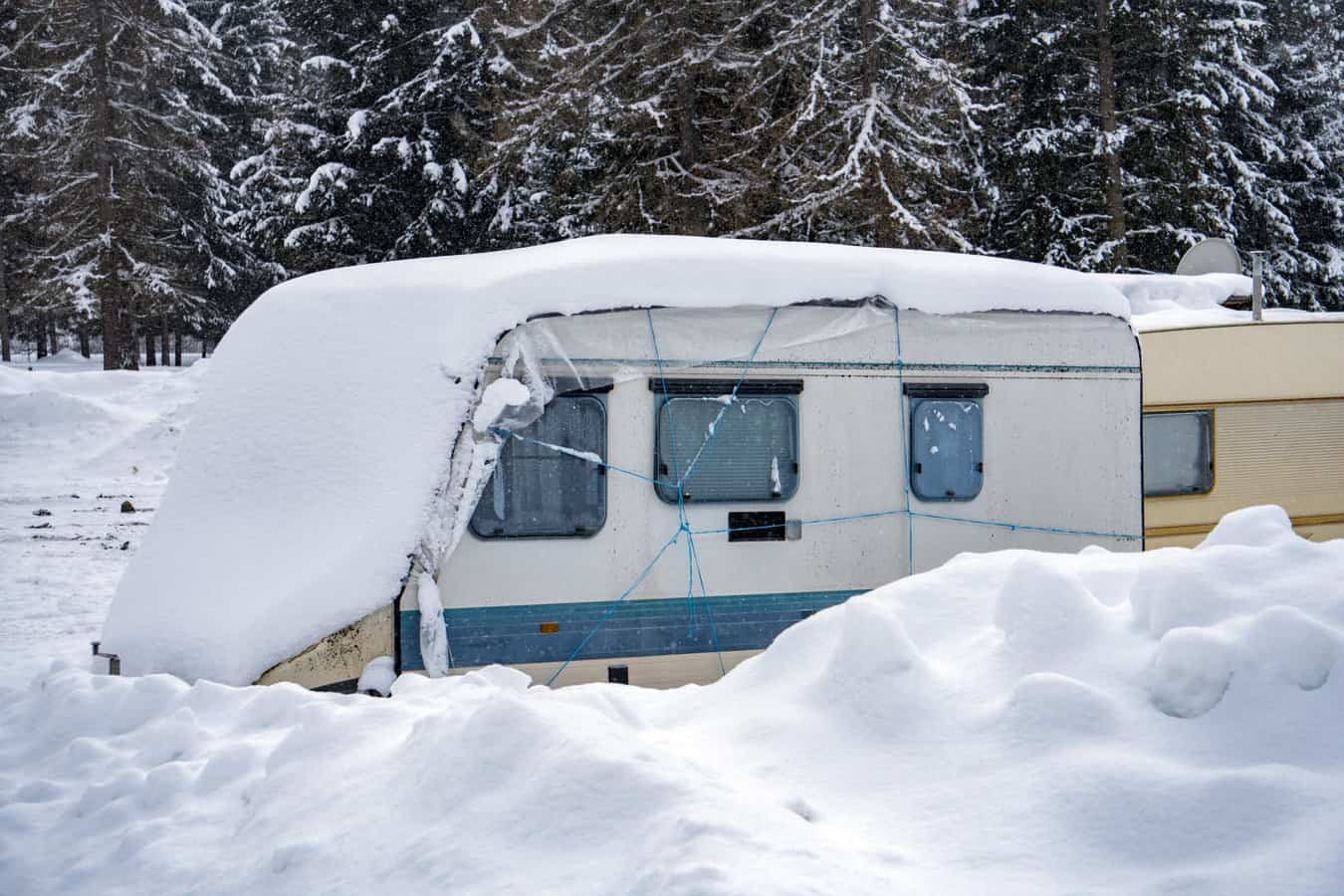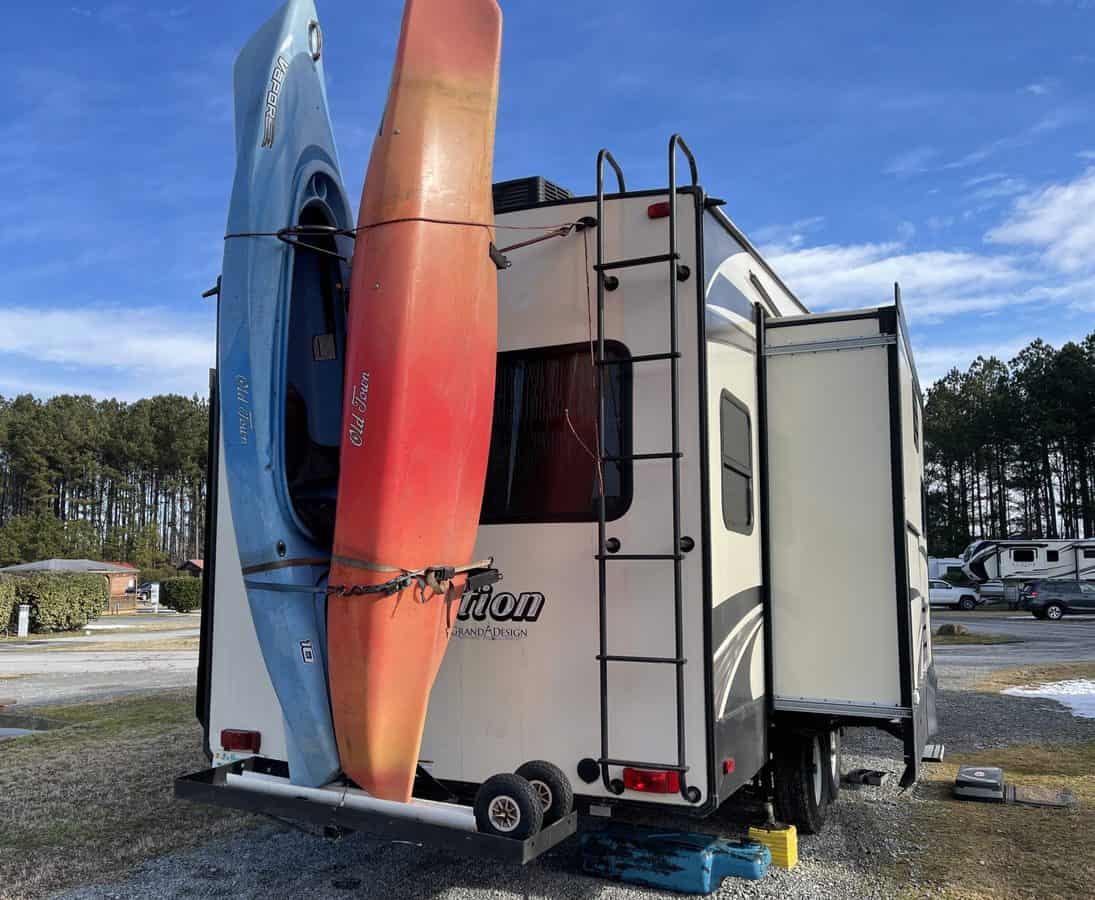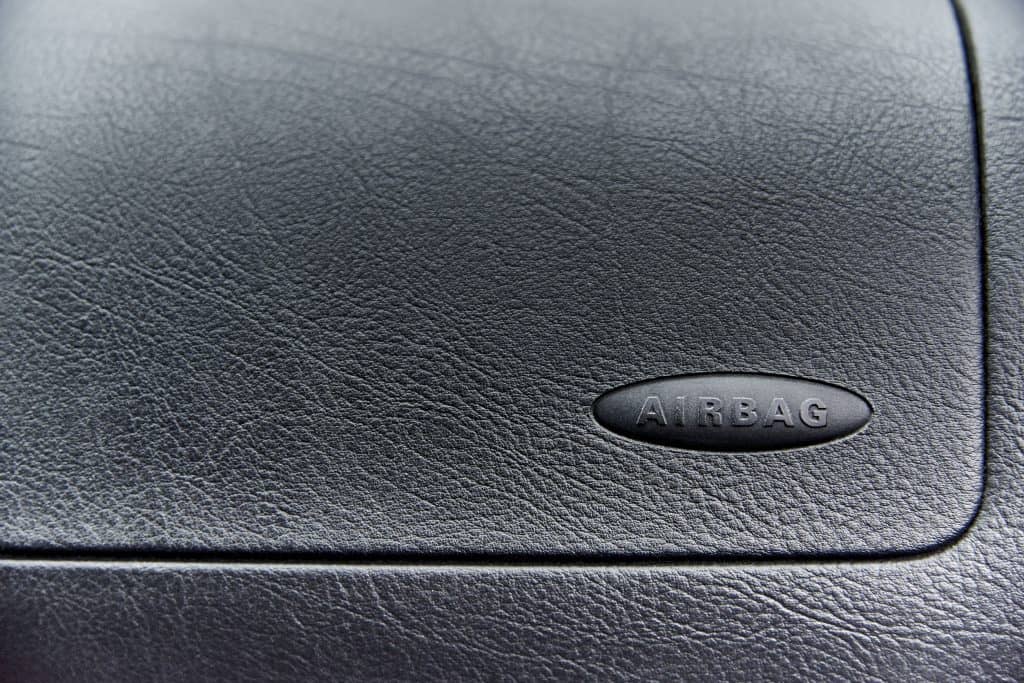
While traveling in a motorhome, one of your main concerns should be the safety of all your passengers. One of these safety measures is knowing the status of airbags in your motorhome or vehicle.
Since motorhomes are manufactured by both automotive and “living” companies, certain aspects of the vehicle must meet safety restrictions. Only certain classes of motorhomes, such as Class C or Class B, are equipped with safety airbags. As for Class A, the safety standards for the living area of the motorhome depend solely on the price tag.
When purchasing or renting a motorhome for you and your family’s next excursion, you should always consider what safety standards each model is held to. Continue reading below to learn more about where airbags can be located in each class of motorhome and what other safety features they include in the event of a crash.
Motorhome Airbags by Class
| Motorhome Class | Airbag Equipped? | If Yes, Where? |
|---|---|---|
| Class B | Yes | Same locations as a normal vehicle |
| Class C | Yes | Only located in the front of the cab |
| Class A | Not Often | If present, only in the front of the cab |
As I mentioned before, each motorhome is held to different safety regulations and therefore is going to have airbags located in different locations (or not at all).
To understand how these differences apply, let’s look at each class of motorhome individually.
Class B
Class B motorhomes are the smallest type of motorhome and are often referred to as “camper vans.”
A Class B motorhome is essentially a van that has been converted into a small living space (usually best for 1-3 people).
Since these motorhomes are built on the chassis of a van, they are still held to the same safety regulations as any other motor vehicle.
Airbags for many of these models can be found in the steering wheel, in front of the passenger front seat, and in other various locations similar to a normal vehicle.
Not only are Class B motorhomes equipped with airbags but they are also required to be crash tested. Be sure that you are driving safely by looking into the crash ratings of each model before you purchase or rent your next motorhome!
While Class B motorhomes are both crash-tested and are equipped with airbags, it is still extremely important that every passenger in your vehicle remains safely secured in their seatbelt.
Walking throughout the motorhome while the vehicle is in motion puts you at great risk of a serious injury in the event of an accident.
Class C
Class C is the second largest class of motorhome.
These motorhomes are built on an extended truck chassis and therefore are still required to meet some of the same safety regulations as all other motor vehicles.
However, since a Class C motorhome is basically a hybrid between a truck and a camper, there are still areas of concern throughout the vehicle.
Airbags in a Class C motorhome will be located in the cab in front of both the driver and the passenger seats. However, airbags will not be found throughout the living portion of the motorhome.
The cab of a Class C motorhome is held to the same safety regulations as other vehicles; meanwhile, the living portion of a Class C motorhome is not crash tested and is likely to crumble in the event of a collision or roll-over.
Only allow passengers to ride in designated areas that are equipped with seatbelts. While the added space may make it more tempting to make use of the amenities while the motorhome is in motion, it is much safer to wait until you have arrived at your next destination.
Class A
Finally we have arrived at the largest class of motorhomes.
When you think of a “home on wheels,” an image of a Class A motorhome is most likely what comes to your mind.
These motorhomes are designed to offer a more luxurious living experience from wherever you and your family desire to go.
Some Class A motorhomes are built on a large commercial bus chassis and often runs off of a diesel engine. However, the more affordable options are built on a flat truck chassis and run off of a regular gas engine.
While the larger more luxurious style of this motorhome may lead you to believe there are more safety features, the opposite may, in fact, be true.
Class A motorhomes do not have the engine block located in front of the cab and therefore offer less protection to the driver and passenger in the event of a collision.
Unlike the Class B motorhome, a Class A motorhome is not often put through testing by the National High way Traffic Safety Administration.
To make the safety standards of this class of motorhome even more questionable, most Class A motorhomes are not required to have airbags.
Since there are no airbags and the motorhome has not been crash-tested, it may be beneficial to purchase and install a collision warning system or front end collision system.
While you may be a good driver there is no harm in having a little extra help to get you and your family to the next destination safely!
With the greater size of Class A motorhomes, it is even more important to ensure that the passengers’ safety is maintained by remaining seated in designated areas with their seatbelt secured.
The beds in motorhomes do not have seatbelts or any added protection, so avoid using the bed while the vehicle is in motion.
If you are hoping to have the highest end safety in your Class A motorhome, you will have to spend a pretty penny not only on the motorhome itself but on independently added safety features.
Comparing the Classes Airbags
When it comes to weighing the importance of the airbag systems and safety with comfort while using a motorhome, there are definite pros and cons for each motorhome class.
For example, Class B motorhomes offer the greatest safety and airbag systems. The only con to the Class B motorhome is that they offer a limited amount of space and therefore offer less comfort than that of Class A.
Be sure to determine the importance of safety and comfort before you rent or purchase your next motorhome. You should always be able to rest easy knowing you and your family are traveling with both safety and style!
Motorhome Safety Features: Pros and Cons
If you have recently purchased a new car, then you may have heard the salesman’s speel as they slap the hood of the car and list off all the available fancy bells and whistles.
While most motorhomes will not come with as many features as a new car, you should be just as excited to hear about the pros and cons of each motorhome’s safety features.
Now that I have you all excited, Let’s take a look at both the pros and cons when it comes to the safety features of each class of motorhome.
Class B
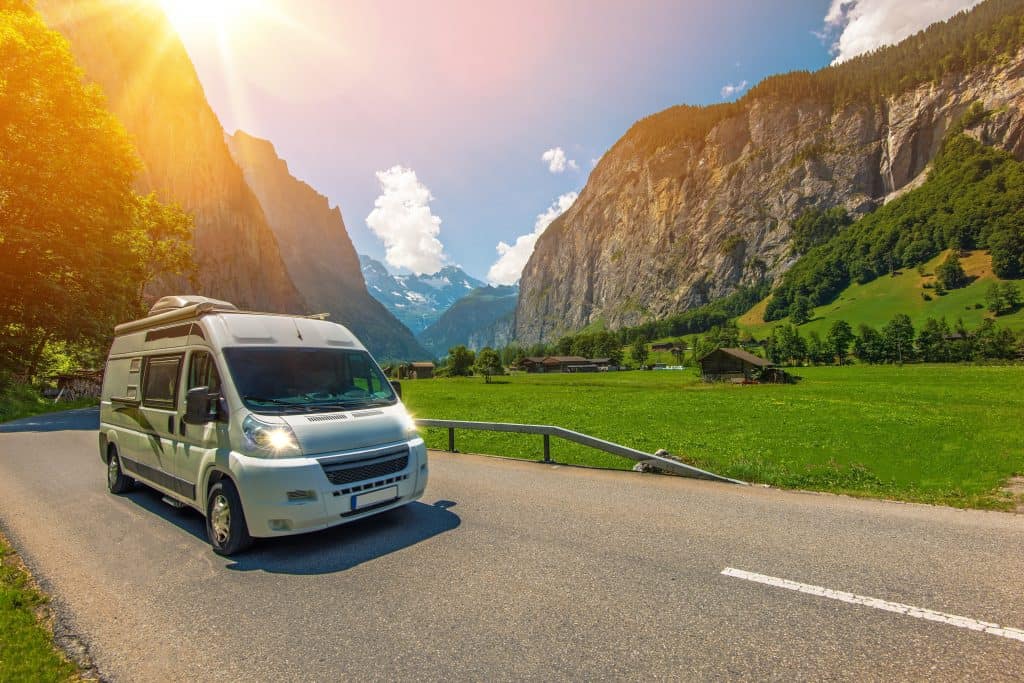
Pros
When considering all of the features combined, a Class B is will almost always be the safest choice for you and your family to travel in.
A Class B motorhome is not only equipped with airbags, a “crumple zone” (I will explain this term more in-depth later on), and a much stronger structural integrity, but they also come with many of the newest driving features.
Some of these newer safety features may include blind-spot monitoring, stability control, and a forward collision warning.
While the feasibility of driving may not seem like an important factor in the safety features of a motorhome, the ability to which you can correctly drive the motorhome plays a large role in you and your passenger’s safety.
A Class B motorhome takes the title of “Easiest Motorhome to Drive.” In fact, driving a Class B motorhome is not much unlike driving an SUV.
Driving a Class B motorhome will not require extra practice or driving experience and is the best option when looking for a smaller parking space!
Cons
When it comes to the negatives for a Class B motorhome, safety does not often appear on the list.
In fact, the most common complaints that accompany a Class B motorhome is the limited amount of living space.
While a Class B motorhome is capable of transporting up to 6 or 7 people, a Class B motorhome can only comfortably sleep 2 or 3.
As well as the lower sleeping capacity, a Class B motorhome lacks many of the amenities that are found in the larger Class C and A motorhomes.
Since a Class B motorhome does not have a bathroom, kitchen area, or multiple sleeping areas, you can expect the need to be “roughing it” a little more in a Class B motorhome as compared to other classes.
If public restrooms and camp fire meals are not your favorite things to do, than a Class B motorhome is most likely not going to meet your desired needs.
Class C
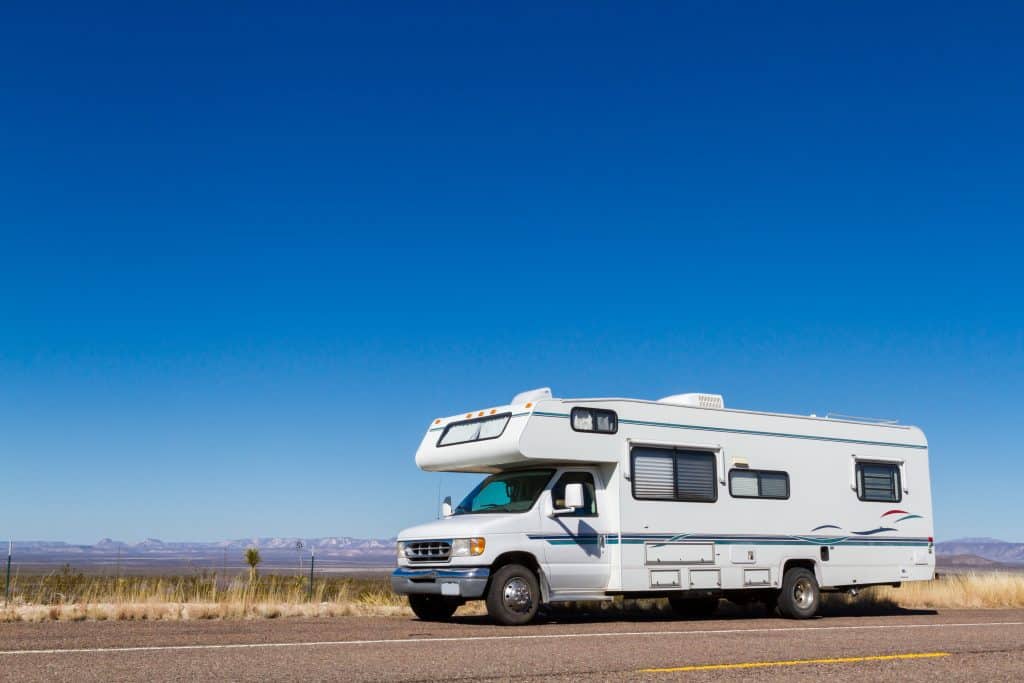
Pros
In the event your motorhome ends up in a head-on collision, a Class C would offer the most protection for the driver and front passenger.
The front of a Class C is a larger hood and engine block. When a Class C collides with something, the engine is dropped and a crash box is formed in order to absorb most of the impact.
This method is commonly known as the “crumple zone” and is used in almost every car you see driving down the road in order to protect all the passengers in the vehicle.
As mentioned in the section before, Class C motorhomes are crash tested to ensure that this “crumple zone” will actually do what it is intended to do.
Cons
While the Class C motorhome may seem like the perfect choice, there are still some cons that may affect your decision to purchase or rent a Class C motorhome.
Some of the most notable disadvantages to a Class C motorhome are the issues that arise with an increased length and the fact that they are more likely to be overloaded than other motorhomes.
First, let’s discuss what problems may occur from driving a motorhome that is longer in length.
One of the most common issues with driving a longer motorhome is that the vehicle is more likely to be pushed around by larger gusts of wind.
Whether the wind simply makes it harder for you to maintain a straight path while driving or if the wind is strong enough to knock over your motorhome, the wind can definitely create some new challenges for an inexperienced driver.
Now let’s move on to discuss how Class C motorhomes are more likely to be overloaded.
On a Class C motorhome, a truck chassis is being used to carry not only a vehicle (the passenger cab) but a small home as well!
Once your motorhome has been fully stocked, packed, and everyone is in it, the likely hood that you are nearing maximum weight capacity increases substantially.
Add on the weight of a dinghy (the car towed behind the motorhome) and your Class C motorhome will have a much higher chance of tire blowouts.
Another con to driving a Class C motorhome is the cab overhang.
Not only does this leave you feeling a little claustrophobic as you drive but the cab overhang can limit your visibility as well.
It may take some time to adjust to the cab overhang being in your vision as you are driving.
Class A
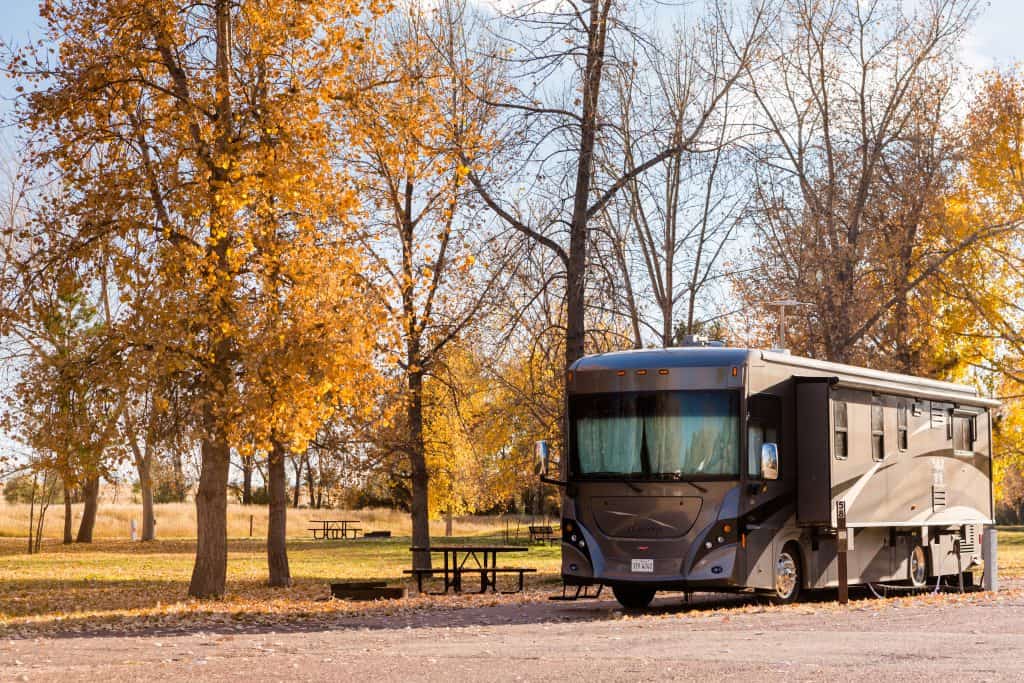
Pros
The Class A motorhome is designed in every way to be the most luxurious and comfortable motorhome for you to drive.
This includes the type of suspension that the motorhome is equipped with.
Unlike other classes of motorhomes, where a bumpy ride leaves you feeling extremely exhausted, the suspension in a Class A is designed to offer a much smoother ride.
As you may have noticed, Class A motorhomes have a much larger windshield than any of the other motorhome classes.
Without the front hood, or cab overhang, a Class A motorhome has the best visibility out of all the motorhome classes.
This increased visibility evens out with the larger size to make driving your Class A motorhome a little bit easier!
Cons
As mentioned before, Class A motorhomes are not required to have many of the same safety features as the other types of motorhomes or vehicles.
In a Class A motorhome, the front passenger seat and driver’s seat have an over the shoulder and lap belt system. However, outside the cab any seatbelts are solely lap belts, putting passengers at greater risk of whiplash in the event of an accident.
While it may seem like it would be important for a Class A motorhome to be built to withstand the same amount of force as any other motor vehicle, the structure of a Class A motorhome is much weaker than other vehicles.
The front two seats do not have as much protection in a Class A motorhome as they would in any other class of motorhome.
Perhaps the most important con that accompanies the purchase of a Class A motorhome is the higher price tag with fewer safety features!
If you are going to spend $100,000 or more you would hope to be getting not only the nicest vehicle on the road but the safest vehicle as well!


